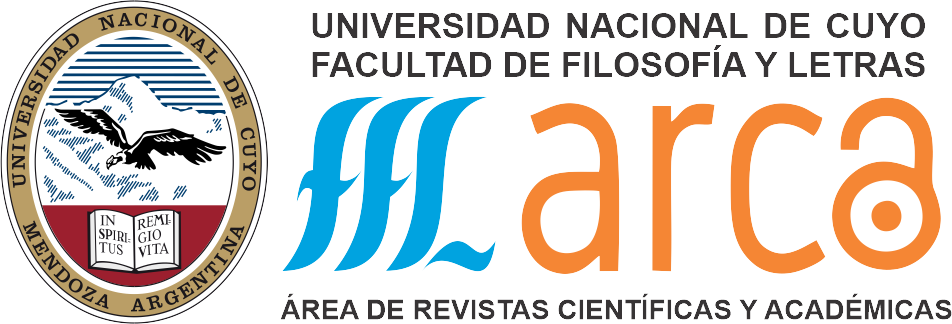Scouting for Data: Creation Process of a Non-Native Speakers’ Specialized Spoken Corpus
Keywords:
corpus-based study, ESP, specialized spoken English corpus, corpus compilation, transcriptionAbstract
The availability of specialized oral material in the field of recreational flying in general and, specifically in the sub-field of hang gliding, is scarce. Therefore, in order to conduct a study of spoken English produced by non-native speakers within the international hang gliding community, it became necessary for the author to collect her own data and compile the specialized corpus she would then analyze. The process involved several phases, which began with the definition of the universal and sample populations, then the design and implementation of an interview, followed by the transcription of the recordings leading to the creation of the finalized files. This article presents a detailed description of the compilation process of this corpus-based research and covers some material which could be helpful to others pursuing or considering to embark in similar projects. It also includes some examples of preliminary findings, since it is still an ongoing project.
References
Azevedo, V. et al. (2017). Interview Transcription: conceptual issues, practical guidelines, and challenges. Revista de Enfermagem Referência 4(14), 159-168. https://doi.org/10.12707/RIV17018
Bailey, J. (2008). First steps in qualitative data analysis: Transcribing. Family Practice 25(2), 127-131. https://doi.org/10.1093/fampra/cmn003
Bernardini, S. (2003). Designing a Corpus for Translation and Language Teaching: The CEXI Experience. TESOL Quarterly 37(3), 528-537. https://doi.org/10.2307/3588403.
CIVL – Commission Internationale de Vol Libre. 2016 CIVL Competition Coordinator Report. Last accessed on: 17 March 2017. Retrieved from: http://www.fai.org/downloads/civl/CIVL_2017_Agenda_Ax20.
Dresig, T., Pehl, T. and Schmieder, T. (2015). Manual (on) Transcription. Transcription Conventions, Software Guides and Practical Hints for Qualitative Researchers. 3rd English Edition. Marburg. Retrieved from: http://www.audiotranskription.de/english/transcription-racticalguide.htm.
Dressen-Hammouda, D. (2012). Ethnographic Approaches to ESP Research. In: B. Paltridge and S. Starfield (Eds) The Handbook of English for Specific Purposes. (pp. 501-518). Wiley-Blackwell Publishers.
ELFA. (2004). ELFA Corpus Transcription Guide. Retrieved from: https://www2.
helsinki.fi/sites/default/files/atoms/files/elfa_transcription_guide.pdf.
Evans, D. (2018). Corpus Building and Investigation for the Humanities: An on-line information pack about corpus investigation techniques for the Humanities. Retrieved from: https://www.birmingham.ac.uk/documents/college-artslaw/corpus/intro/unit2.pdf.
FAI – Fédération Aéronautique Internationale. Sporting Code Section 7. (2018). Last accessed on: 4 October 2018. Retrieved from: https://www.fai.org/sites/default/files/civl/documents/sporting_code_s7-common_2018.pdf.
Genzuk, M. (2003). A synthesis of ethnographic research. Occasional Papers Series. Center for Multilingual, Multicultural Research (Eds). Center for Multilingual, Multicultural Research, Rossier School of Education, University of Southern California. (pp. 1-10). Retrieved from: https://web-app.usc.edu/web/rossier/publications/33/Ethnographic_Research.pdf.
Gobo, G. (2004). Sampling, Representativeness and Generalizability. In: Seale, C. et al. (Eds). Qualitative Research Practice (pp. 405-426). SAGE.
Gobo, G. (2011). Ethnography. In: D. Silverman. Qualitative Research. 3rd Edition (pp. 15-36). SAGE, ttps://www.researchgate.net/publication/279373417_Ethnography.
Hammersley, M. (2007). Reflections on Linguistic Ethnography. Journal of Sociolinguistics 11 (5), 689 - 695.
InqScribe 2.5 Documentation. Last accessed on: 25 July 2022. Retrieved from: https://docs.inqscribe.com/2.2/snippets.html.
Kübler, N., Mestivier, A. and Pecman, M. (2018). Teaching Specialised Translation Through Corpus Linguistics: Translation Quality Assessment and Methodology Evaluation and Enhancement by Experimental Approach. Meta, 63 (3), 807-825. https://doi.org/10.7202/1060174ar
Legard, R., Keegan, J. and Ward, K. (2003). In-depth Interviews. In: J. Ritchie and J. Lewis (Eds). Qualitative Research Practice. A Guide for Social Science Students and Researchers (pp. 138-169). SAGE.
Mauranen, A. (2003). The Corpus of English as Lingua Franca in Academic Settings. TESOL Quarterly 37(3), 513-527.
MICASE Manual. (2003). The Michigan Corpus of Academic Spoken English. Prepared by R. C. Simpson, D. Y.W. Lee and S. Leicher. Retrieved from: https://ca.talkbank.org/access/0docs/MICASE.pdf .
Nagy, N. and Sharma, D. (2013). Transcription. In: Podesva, R. J. and Sharma D. (Eds). Research Methods in Linguistics (pp. 235-256). Cambridge University Press.
Neuman, W. L. (2014). Social Research Methods: Qualitative and Quantitative Approaches. Pearson Education Ltd.
Reppen, R. (2012). Building a Corpus. What are the key considerations? In: A. O’Keeffe and M. McCarthy (Eds). The Routledge Handbook of Corpus Linguistics (pp. 31-38). Routledge.
Ritchie, J., Lewis, J. and Elam, G. (2003). Designing and Selecting Samples. In: J. Ritchie and J. Lewis (Eds). Qualitative Research Practice. A Guide for Social Science Students and Researchers (pp. 77-108). SAGE.
Sarmento, S. (2010). O verbo modal CAN em manuais de aviação em inglês: implicações para materiais didáticos. In: C. Lopes Perna, H. Koch Delgado and M. J. Finatto (Orgs). Linguagens especializadas em corpora: Modos de dizer e interfaces de pesquisa. (pp. 202 - 232) EDIPUCRS. Retrieved from: https://editora.pucrs.br/edipucrs/acessolivre//livros/linguagensespecializadasemcorpora.pdf.
Schilling, N. (2013). Surveys and Interviews. In: R. J. Podesva and D. Sharma (Eds). Research Methods in Linguistics (pp. 96-115). Cambridge University Press.
Sun, G. (2016). The Acquisition of English Articles by Second Language Learners: The Sequence, Differences, and Difficulties. SAGE Open, 6(1). https://doi.org/10.1177/2158244016635716
VOICE Project. (2007). Transcription Conventions [2.1]. Retrieved from: https://www.univie.ac.at/voice/ .
Downloads
Published
How to Cite
Issue
Section
License
License
Esta obra está bajo una Licencia Creative Commons Atribución 2.5 Argentina.
Los/as autores/as que publican en esta revista están de acuerdo con los siguientes términos:
1. Los/as autores conservan los derechos de autor y garantizan a la revista el derecho de ser la primera publicación del trabajo bajo una licecncia Creative Commons Atribución 2.5 Argentina (CC BY 2.5 AR) . Por esto pueden compartir el trabajo con la referencia explícita de la publicación original en esta revista.
2. Anales de lingüística permite y anima a los autores a difundir la publicación realizada electrónicamente, a través de su enlace y/o de la versión postprint del archivo descargado de forma independiente.
3. Usted es libre de:
Compartir — copiar y redistribuir el material en cualquier medio o formato
Adaptar — remezclar, transformar y construir a partir del material para cualquier propósito, incluso comercialmente.











